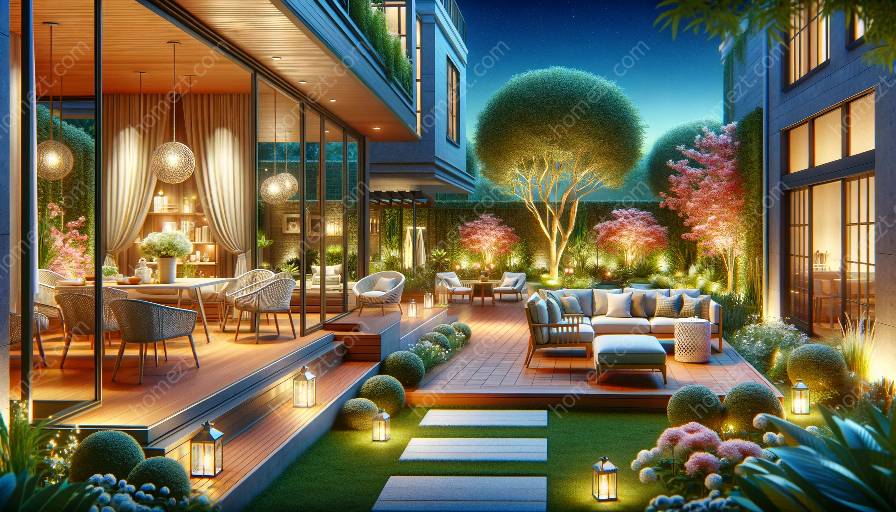Outdoor living spaces have become an extension of the home, providing a place for relaxation and entertainment. A well-designed outdoor space seamlessly merges with the surrounding garden and complements the interior design and styling of the home. Understanding the key elements of outdoor living spaces design is essential for creating an inviting and functional outdoor oasis.
1. Functional Layout
A well-designed outdoor living space starts with a functional layout that considers the flow of movement and the activities that will take place in the area. Whether it's a dining area, lounging space, or outdoor kitchen, the layout should be carefully planned to optimize the use of the space and create a seamless transition from indoors to outdoors.
2. Cohesive Design
Creating a cohesive design that integrates with the garden and overall home design is essential. This involves selecting materials, colors, and furnishings that complement the existing interior design and styling, as well as the natural elements of the garden. The goal is to create a harmonious connection between the indoor and outdoor spaces.
3. Comfortable Furnishings
The choice of furnishings can significantly impact the comfort and functionality of an outdoor living space. Durable and weather-resistant furniture that is comfortable and inviting is essential for creating a space where people can relax and enjoy the outdoor environment. Consider factors such as seating arrangements, upholstery, and the inclusion of shade options for comfort.
4. Lighting and Ambiance
Lighting plays a critical role in setting the ambiance of an outdoor living space. Incorporating a variety of lighting options, such as string lights, lanterns, and outdoor sconces, can enhance the atmosphere and extend the usability of the space into the evening. Consider both functional and decorative lighting to create a welcoming and inviting environment.
5. Landscape Integration
Integrating the outdoor living space with the surrounding landscape is key to creating a seamless transition between the interior and exterior. This can involve the use of landscaping elements, such as plants, trees, and hardscaping features, to define the boundaries of the outdoor space and enhance its connection to the garden design.
6. Outdoor Kitchen and Cooking Area
For those who love to entertain and cook outdoors, an outdoor kitchen or cooking area is a valuable addition to any outdoor living space. Including amenities such as a grill, countertop space, and storage for cooking utensils can elevate the functionality of the space and make it a central hub for outdoor gatherings.
7. Personalized Touches
Adding personalized touches to the outdoor living space can help create a unique and inviting atmosphere. Incorporating decorative elements, such as outdoor rugs, throw pillows, and artwork, can infuse personality and style into the space, reflecting the individual taste and preferences of the homeowner.
8. Seasonal Considerations
Designing an outdoor living space that takes into account seasonal variations is important for ensuring year-round enjoyment. This can involve features such as shade structures for hot summer days, fire pits or heaters for cooler evenings, and landscaping elements that provide visual interest throughout the changing seasons.
9. Sustainability and Eco-Friendly Design
Incorporating sustainable and eco-friendly design elements into the outdoor living space is not only environmentally responsible but can also enhance the overall appeal of the space. This can include using eco-friendly materials, water-wise landscaping, and energy-efficient outdoor lighting options.
Conclusion
Designing outdoor living spaces that seamlessly blend with garden design and complement interior styling involves careful consideration of functional layout, cohesive design, comfortable furnishings, lighting and ambiance, landscape integration, outdoor kitchen amenities, personalized touches, seasonal considerations, and sustainability. By integrating these key elements, homeowners can create a stunning and inviting outdoor oasis that extends the living space into the natural beauty of the outdoors.


























